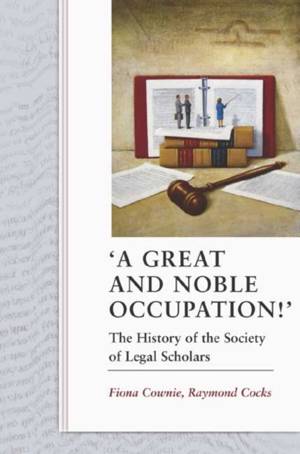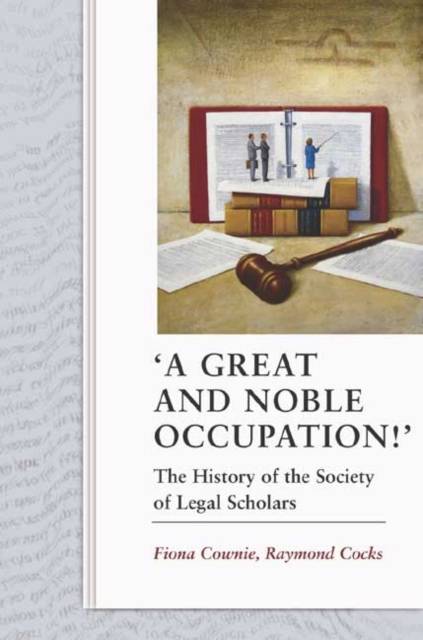
- Afhalen na 1 uur in een winkel met voorraad
- Gratis thuislevering in België vanaf € 30
- Ruim aanbod met 7 miljoen producten
- Afhalen na 1 uur in een winkel met voorraad
- Gratis thuislevering in België vanaf € 30
- Ruim aanbod met 7 miljoen producten
Zoeken
'A Great and Noble Occupation!'
The History of the Society of Legal Scholars
Fiona Cownie, Raymond Cocks
Hardcover | Engels
€ 152,95
+ 305 punten
Omschrijving
The Society of Legal Scholars, originally the Society of Public Teachers of Law, was created in 1909, but was fortunate to survive its first half century. It had few members, lacked financial resources and was weak in influence. In comparison with other university disciplines Law enjoyed a fragile status, and was often held in low esteem by barristers and solicitors. At times the SPTL was caught up in problems of its own making, for instance refusing to admit women until the late 1940s. But there were also moments of excitement and achievement: the years between 1909 and the start of WWI were full of hope and new ideas and the establishment of the Journal of the Society of Public Teachers of Law in the 1920s was an important achievement for legal scholars.
During the social revolution of the 1960s the SPTL continued to function as a rather sedate gentleman's club, gathering at its annual conference to socialise, rather than to engage in academic debate. The 1970s saw a sustained drive from its Young Members' Group to create a new, more serious organisation, with better conferences and more effective decision-making processes. The Society evolved slowly, but the process accelerated in the 1990s, with members encouraged to reinforce their intellectual contribution to the discipline and act as a central point for policy debate within the legal academic community. As we stand at the beginning of the twenty first century, the Society, with nearly 3,000 members, has come a long way from its small beginnings.
During the social revolution of the 1960s the SPTL continued to function as a rather sedate gentleman's club, gathering at its annual conference to socialise, rather than to engage in academic debate. The 1970s saw a sustained drive from its Young Members' Group to create a new, more serious organisation, with better conferences and more effective decision-making processes. The Society evolved slowly, but the process accelerated in the 1990s, with members encouraged to reinforce their intellectual contribution to the discipline and act as a central point for policy debate within the legal academic community. As we stand at the beginning of the twenty first century, the Society, with nearly 3,000 members, has come a long way from its small beginnings.
Specificaties
Betrokkenen
- Auteur(s):
- Uitgeverij:
Inhoud
- Aantal bladzijden:
- 330
- Taal:
- Engels
Eigenschappen
- Productcode (EAN):
- 9781841136783
- Verschijningsdatum:
- 1/09/2009
- Uitvoering:
- Hardcover
- Formaat:
- Genaaid
- Afmetingen:
- 156 mm x 234 mm
- Gewicht:
- 589 g

Alleen bij Standaard Boekhandel
+ 305 punten op je klantenkaart van Standaard Boekhandel
Beoordelingen
We publiceren alleen reviews die voldoen aan de voorwaarden voor reviews. Bekijk onze voorwaarden voor reviews.








